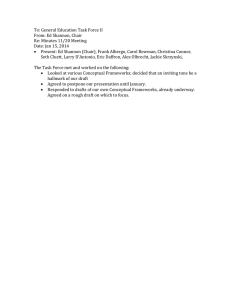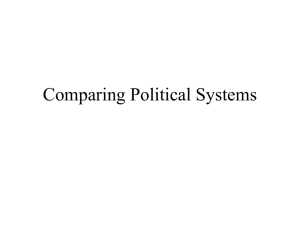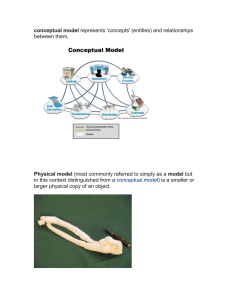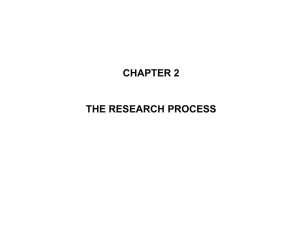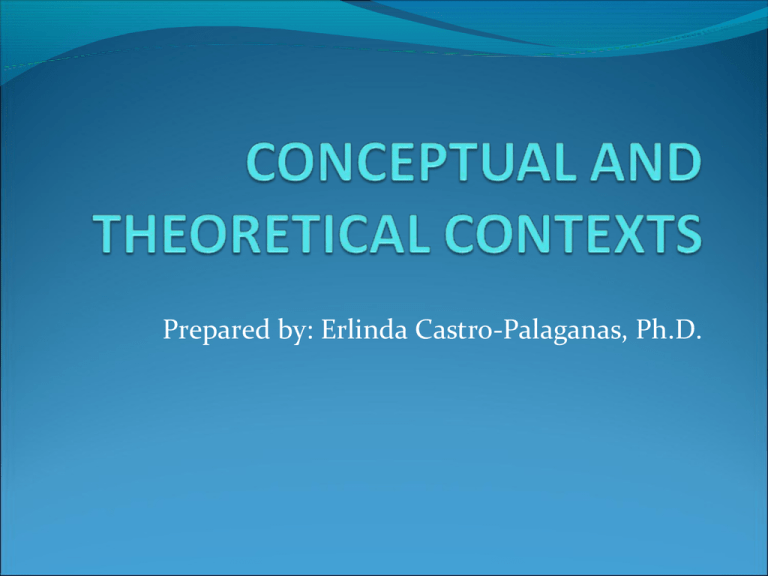
Prepared by: Erlinda Castro-Palaganas, Ph.D.
Learning Objectives:
At the end of the session, we will be able to:
1. Explain diference between theoretical and
conceptual frameworks/contexts;
2. Discuss the importance of developing a theoretical
or conceptual frameworks/contexts;
3. Critique examples of theoretical and conceptual
frameworks/contexts; and
4. Develop a theoretical or conceptual
frameworks/contexts for an identified research topic.
DEVELOPING A FRAMEWORK
A FRAMEWORK provides an explicit explanation why
the problem under study exists by showing how the
variables are related to each other.
RELATED TERMINOLOGIES
Constructs/Concept
Relational statement
Theory
Conceptual model
Constructs and Variables
Constructs
Concepts, often complex
Not directly measurable
Also called ‘theoretical variables’
Variables
Something we can measure
Concrete measured expressions to which we can assign
numeric values
Theory and Frameworks
Classically defined, a theory is an abstract
generalization that systematically explains the
relationships among phenomena.
The basic components of a theory are concepts.
Consists of a set of statements, each of which
expresses a relationship among the concepts.
The statements are arranged in a logically interrelated
system that permits new statements to be derived
from them.
Theories vary in their level of complexity. Some
theories attempt to describe large segments of the
environment and are called grand theories or
macrotheories, whereas other theories are more
restricted in scope.
Theories that are more specific to certain phenomena
are sometimes referred to as middle-range theories.
Concepts and frameworks
Conceptual frameworks or schemes are less fully developed
attempts at organizing phenomena than are theories.
Concepts are the basic elements of a conceptual scheme, as in
theories.
In a conceptual framework, the concepts are not linked to
one another in a logically ordered deductive system. Much of
the conceptual work in social sciences is more rightfully
described as conceptual schemes than theories.
Conceptual frameworks are highly valuable in that they often
serve as the springboard for theory development.
Overall objective of theories and
frameworks
To make scientific findings meaningful and generalizable.
Help to summarize existing knowledge into coherent
systems and stimulate new research by providing both
direction and impetus.
Theories and conceptual frameworks are created or
developed by researchers. Their creation requires
imagination and congruence with reality and existing
knowledge.
All theories and frameworks are considered tentative and
never proved.
Models
Models are symbolic representations of phenomena.
Models depict a theory or conceptual scheme through
the use of symbols or diagrams.
Two types of models frequently used in research are
mathematic or statistical models and schematic
models (or conceptual maps).
Models are useful to researchers because they use a
minimal amount of words, which tend to be
ambiguous, in representing reality.
Conceptual models
•
•
•
•
•
Without a conceptual model analysis becomes
sterile data mining
In quantitative research creativity comes in
developing the conceptual models
Even in descriptive research when the objective is to
describe (e.g. measure prevalence of a behavior) there
is an underlying conceptual model.
A model tells us how to interpret the world
In quantitative research we match a theoretical
model with an empirical model
An example theoretical model
Socioeconomic
Status
Academic
Achievement
Academic Ability
Theoretical Model with Variables
Income
Job
Prestige
Socioeconomic
Status
Academic
Achievement
Academic Ability
Grades
Math skills
Language
skills
Level of
Schooling attained
Example of a model
•
In the US, blacks initiate sexual activity at much earlier
ages than whites (we know this through quantitative
research)
• This relationship holds even after controlling for
individual characteristics
• One argument prevalent in the literature is that black
culture is more permissive regarding early sexual behavior
(calls for in-depth ethnographic research)
• Another explanation is blacks than whites are more likely
to live in poor communities and sexual activity provides a
marker of adult status and hence are more likely to engage
in early sexual behavior (testable with quantitative data
although also requires qualitative data for a complete
understanding)
Parent’s age
Employment’s status
Ethnicity
Family size
Parent’s education
Family income
Marital status
Living status
Parent-child attachment
(connectedness)
Parental
support
Parental
proximity
Parent-child communication
regarding sex
Perceived Parental
Expectation
Peer influence
Sexual attitude:
-Attitude towards
premarital sexual behavior
-Attitude towards
contraception
Sexual Behavior:
Have sex or not
Age at first sexual behavior
Number of sexual partner
Frequency of sexual intercourse
Consistent condom use
Outer intercourse: touching
hands, hugging/kissing, petting
upper part of body, petting
lower part of body.
Analytical Framework for the Community Assessment
Community
Characteristics
• Demographic
profile
• Health situation
• Economic
conditions
• Governance and
political context
• Infrastructure
and public
utilities
Perception Well-being
RH, Gender and
Population
Development Issues
• Individual
• Peers and
partners
• Family/Household
• Institutional
• Government
• Church
• School
• Others
• Community
• Infrastructure
• Public Utilities
Cultural Context
Beliefs and
Perceptions
• Notions of
health and
Reproductive
Health
• Ideas about
family planning;
ideal no. of
children; value
of children.
• Perceptions
about the use of
contraceptives
• Taboos related
to pregnancy
and childbirth
Needs to Promote
RH Behavior
• Knowledge
• skills
• Policies and
mechanisms
• Services and
facilities
• Economic
resources
• Others
Opportunities
•
•
•
•
•
•
•
•
Policies
Resources
Advocates
Enabling
mechanisms
Skills
Knowledge
Networks
Others
Action Programs/
Plans
• Advocacy
• Training and
education
• Service
• Research
• Others
•
hers
Constraints
Policies
Resources
Detractors
Enabling
Mechanisms
• Knowledge
• Skills
• Others
•
•
•
•
The
Gender
Tree
Roles
Activities /
Work
Responsibilities
Organized, reinforced,
maintained by:
Education/School, Family,
State/Law, Media, Workplace,
Peer-groups
Religion, Economic system,
Science
Norms
Tradition
Beliefs
GENDER
GENDER EQUALITY
WOMEN’S PARTICIPATION
PROTECTION &
FULFILLMENT OF
WOMEN’S RIGHTS
ECONOMIC
EMPOWERMENT OF
WOMEN
CONTROL
PARTICIPATION
CONSCIENTIZATION
ACCESS
WELFARE
GOVERNMENT
GOVERNMENT
PRIVATE
PRIVATE SECTOR
SECTOR
CIVIL
CIVIL SOCIETY/NGO
SOCIETY/NGO
ACADEME
ACADEME
Gender Responsive Governance
Figure 1. Conceptual Framework Plan for Women (FPW)- NCFRW
With the literature that you have
reviewed, identfy a theoretcal
framework and/or develop your
conceptual framework that will
guide your research problem.
Thank you….

